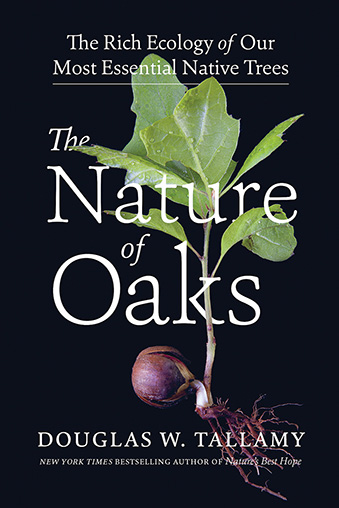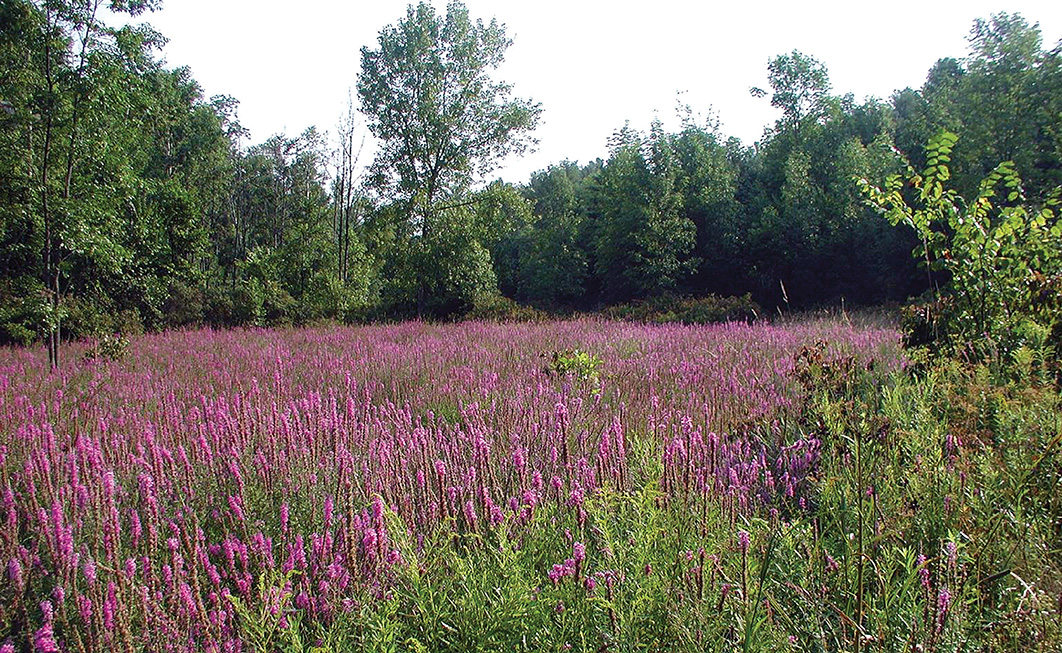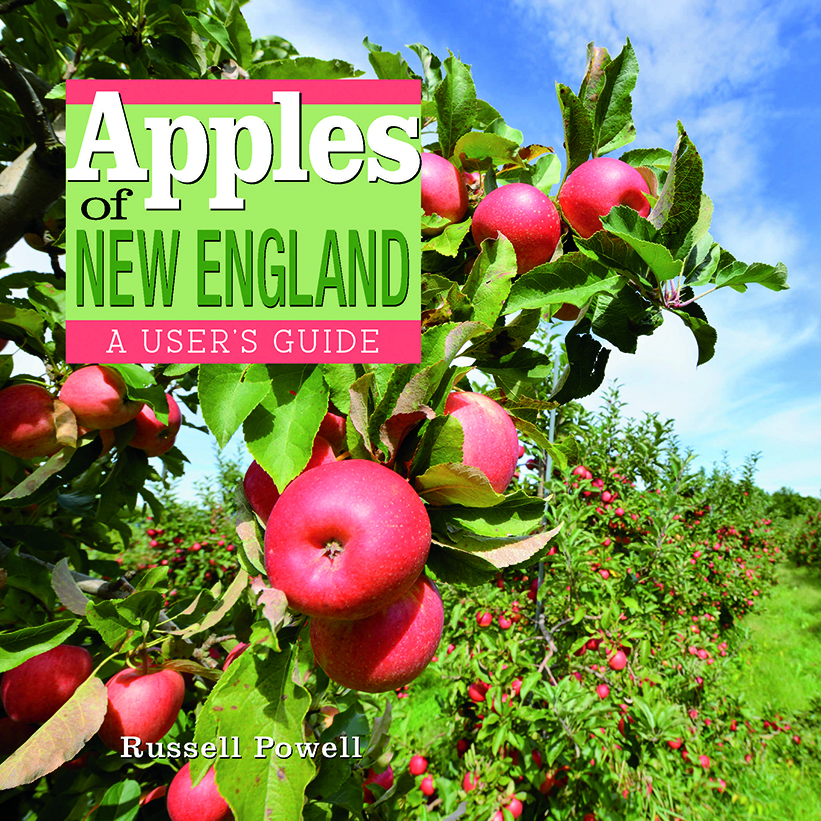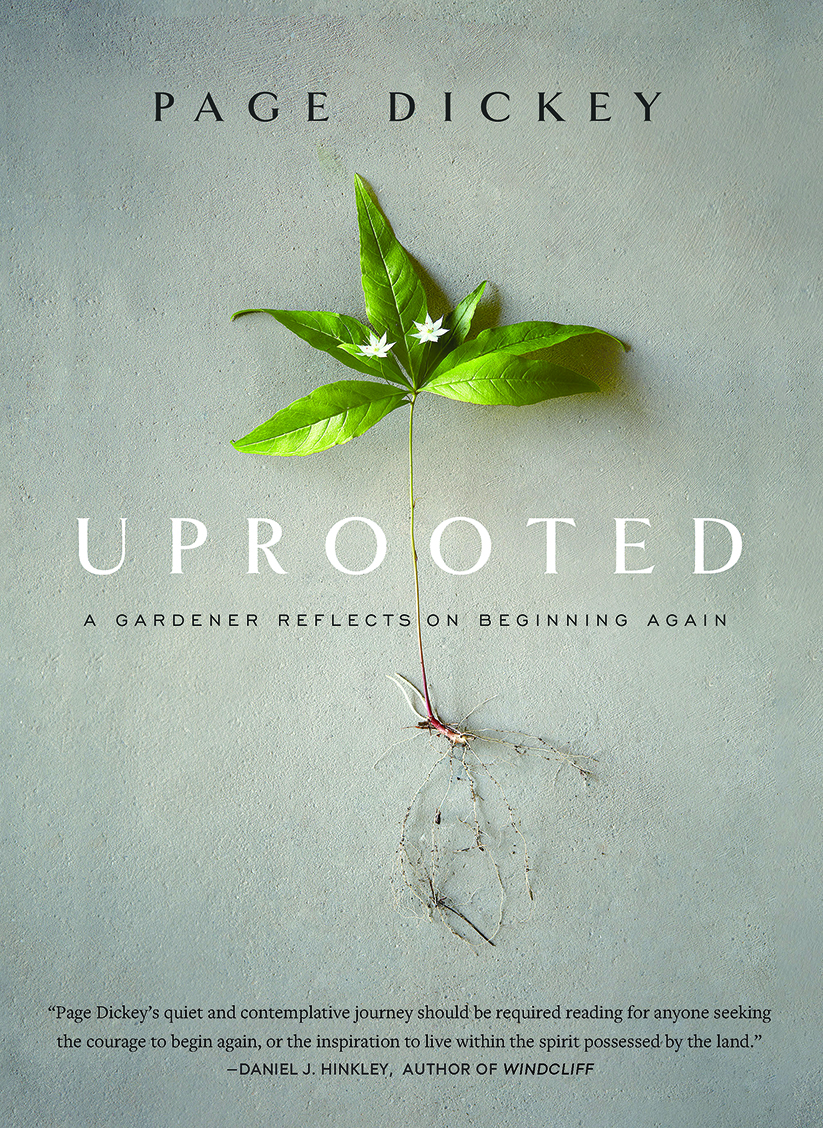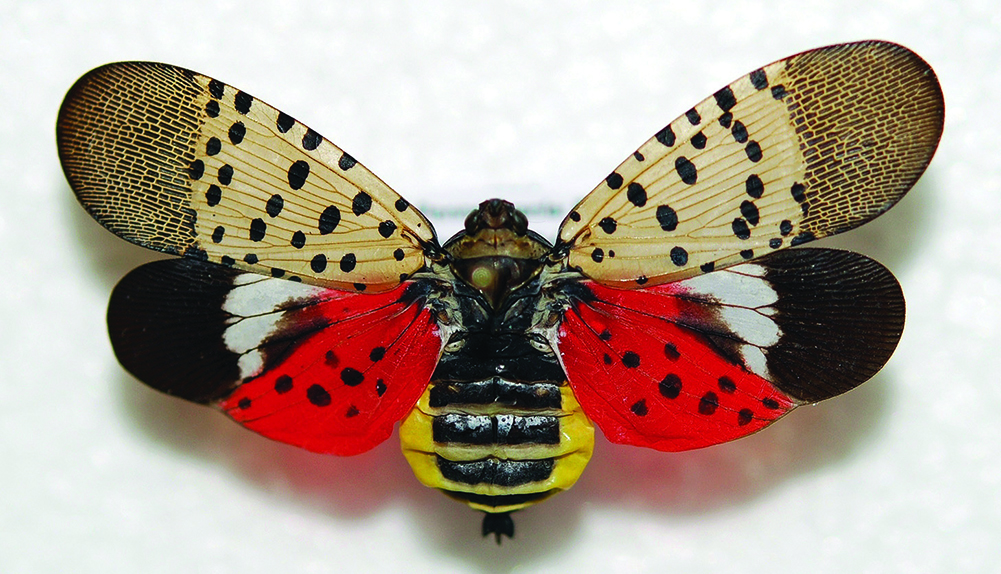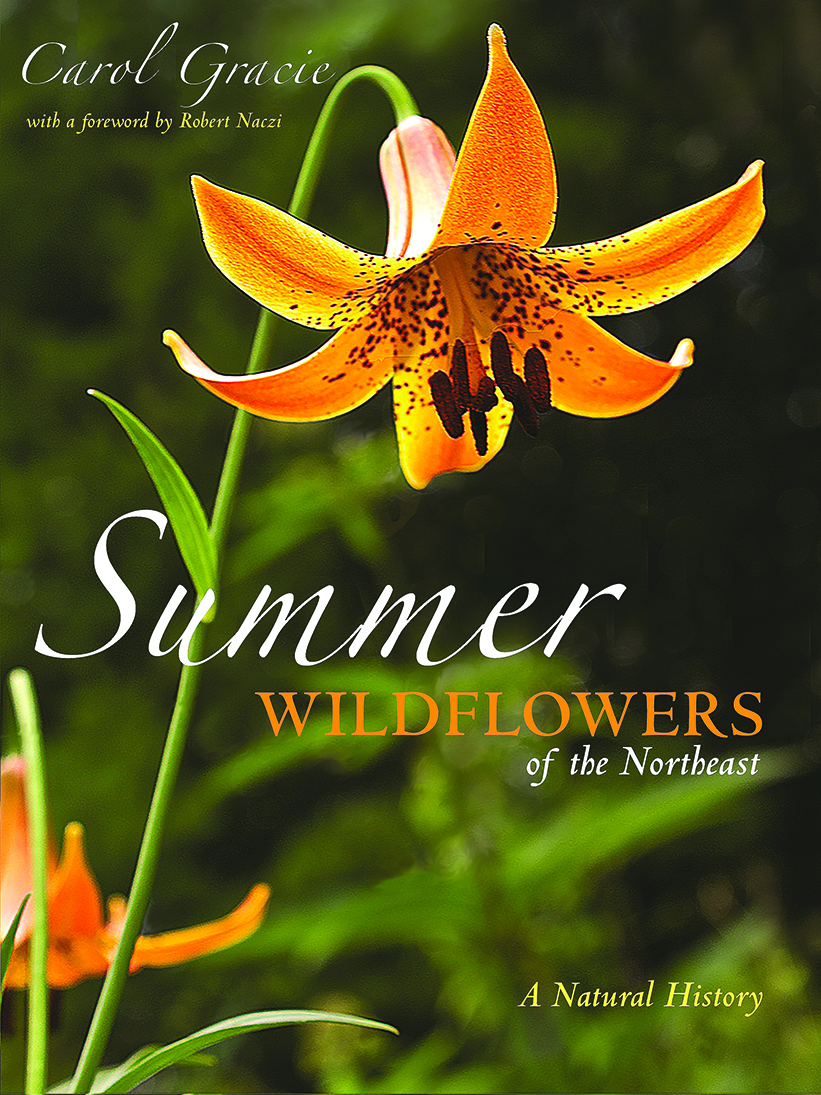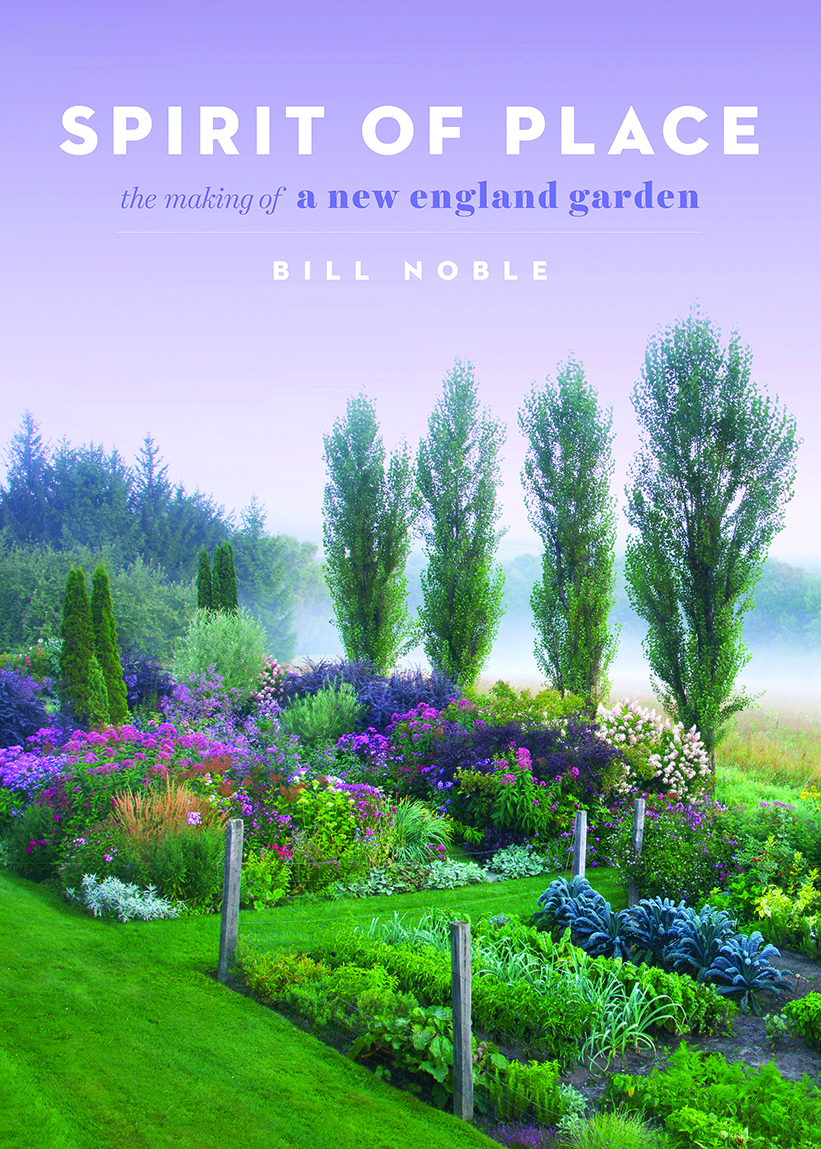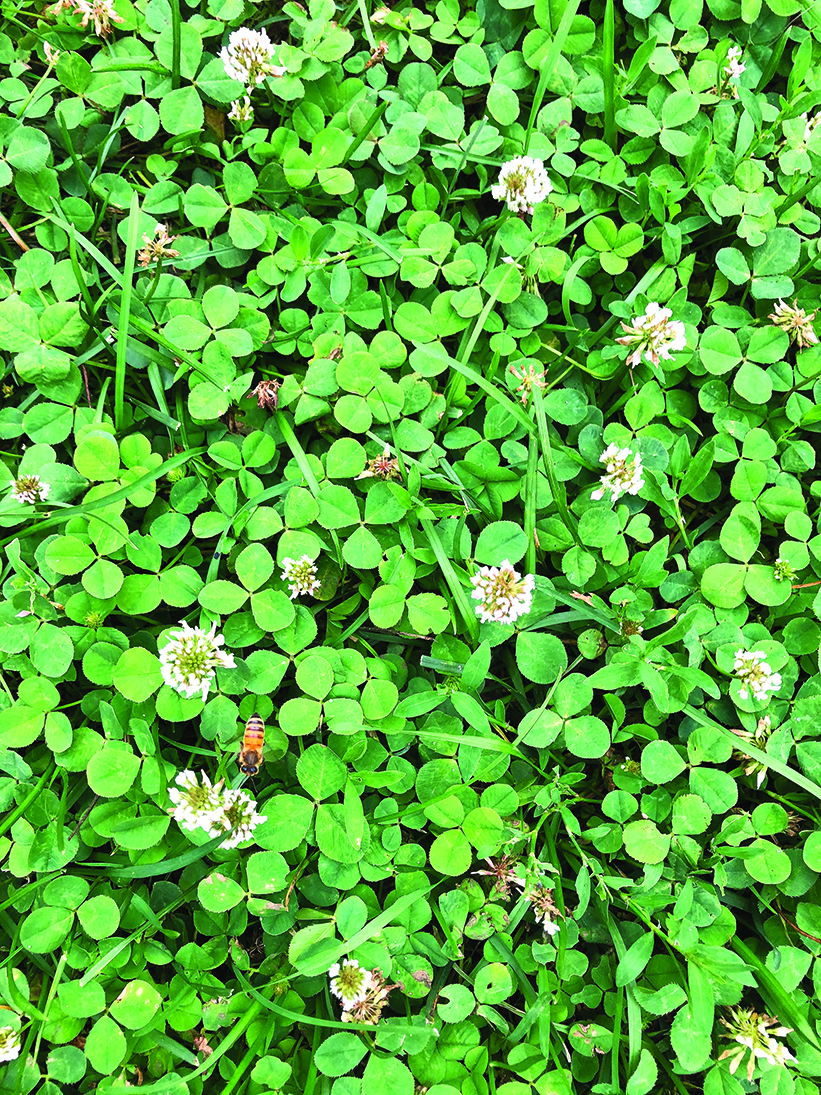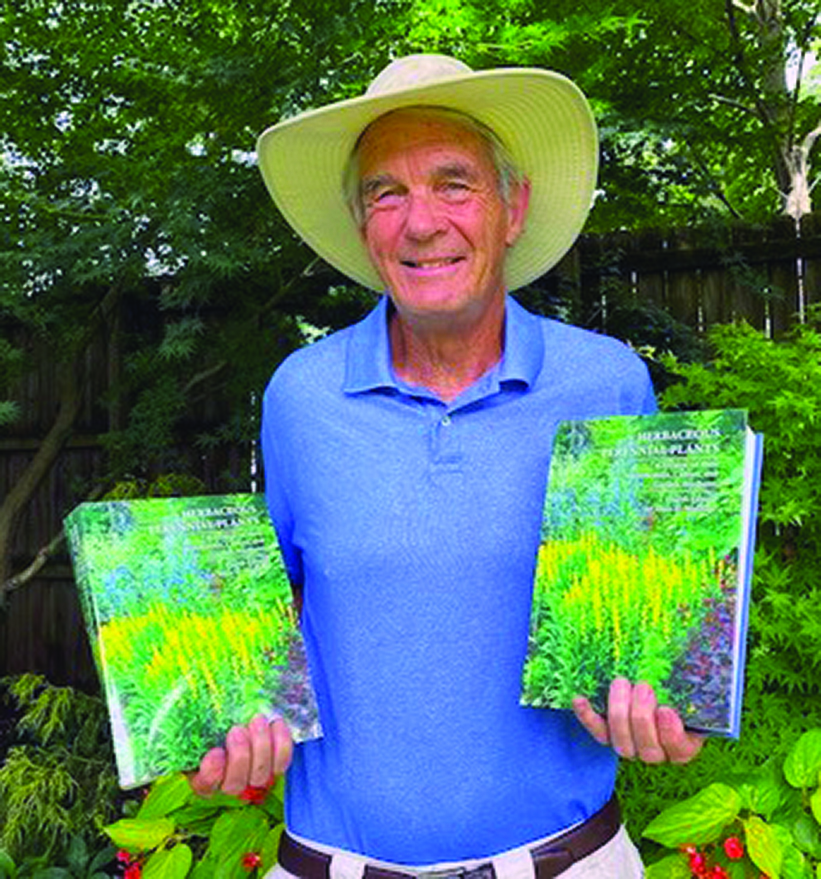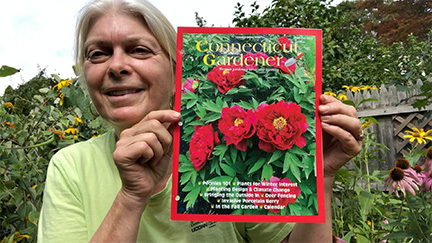By Anne Rowlands Of course Doug Tallamy would write a book about oaks. TThe University of Delaware entomologist has been praising and raising awareness of Quercus for years in his widely popular books and lectures, and this newest book is fascinating. It’s a really useful field guide – not only to oaks, but also to the myriad species that play a part in the oak ecosystem. “Oaks support more forms of life and more fascinating interactions than any other tree genus in North America,” writes Tallamy. The content drives that home. I found this little book (200 pages) to be written for those who want to dive into the science…
-
-
Invasive Purple Loosestrife
By Will Rowlands Purple loosestrife (Lythrum salicaria) was the first invasive plant I learned about. In the 1970s I saw ever larger incursions along Route 17K in New York, south of the Catskills, on my way to visit my older brother near Ithaca. When travelling the same route ten years ago and fully aware of its invasive nature, I saw very few patches. The area had been gentrified in the intervening decades and was now home to numerous horse farms. Donna Ellis at UConn told me that beetles were being used for bio-control in New York State but the loosestrife is still out there … I just wasn’t seeing it.…
-
Apples of New England
By Will Rowlands Interested in apples and their history? This book is for you. Both Anne and I found it entertaining and informative. Read about the real Johnny Appleseed (Massachusetts native John Chapman), and David Church from Newington, Connecticut, who distributed apple seeds during his travels in New York State. Immerse yourself in the history of apples in New England and discover which apple variety is the oldest … the Roxbury Russet or the Yellow Sweeting (aka Sweet Rhode Island Greening). Three of the most popularly grown apples in the 1700s and 1800s were the Roxbury Russet, Sheep’s Nose and Westfield Seek-No-Further, all discovered in New England. This handy book…
-
UPROOTED
By Will Rowlands Page Dickey’s former garden – Duck Hill in North Salem, New York – is well-known to garden buffs. It’s been featured in numerous publications and Dickey has written two books about it. Things changed when Dickey and her husband, Francis Schell, started considering a move. She was thinking of another quirky farmhouse, an apple orchard and maybe a real meadow. Who can blame her? I’d like a meadow and an orchard of Northern Spies. Dickey’s reasons for leaving are familiar to many of us: they were getting older, the cost of living was high and the three acres of intensive plantings were a challenge … and there…
-
The Spotted Lanternfly is Here
The CT Agricultural Experiment Station (CAES) has announced the detection of an adult spotted lanternfly, Lycoma delicatula, in Stamford and West Haven, and several live adults in Greenwich and New Canaan. Surveys in the areas of the detections will be conducted. Single adults were discovered in Farmington in 2018 and Southbury in 2019. The spotted lanternfly (SLF) is an invasive sap-feeding planthopper that was originally discovered in Berks County, Pennsylvania in 2014. It is native to China, India and Vietnam. SLF attacks many hosts and has the potential to severely impact farm crops, particularly apples, grapes and hops, and a number of tree species including maple. In addition to Pennsylvania…
-
Summer Wildflowers
By Anne Rowlands Carol Gracie’s Spring Wildflowers of the Northeast now has a companion volume, Summer Wildflowers of the Northeast, focusing on wildflowers that bloom between early June and late September. She continues with the same winning format of interesting, well-researched and beautifully photographed essays. The book is written in essay form to appeal to all who share an interest in wildflowers and is arranged alphabetically by the most widely used common name (along with the scientific name). Each essay – there are 35 – focuses on a summer-blooming species that can be found in the Northeastern quarter of the United States. There’s a considerable amount of information included on…
-
Spirit of Place
By Will Rowlands Bill Noble didn’t start out with a degree in horticulture, botany or landscape design. He grewup in Norwalk and had an assortment of jobs as a young man, including construction and market gardening. He got a lot of experience when he landed a job in the ’70s at the property of Augustus Saint-Gaudens in Cornish, NH. Saint-Gaudens was a prominent sculptor in the 1800s. As many as 100 other artists and performers joined him there and the area eventually became the Cornish Art Colony. It was a place where artists such as Maxfield Parrish and Frederic Remington, and performers like Ethel Barrymore and Isadora Duncan, could escape…
-
Clover – Back in Style
By Will Rowlands An interesting thing happened this spring. I had recently finished a story about the positive aspects of dandelions and was enjoying not chasing around after them when, all of a sudden, it struck me that we had a lot of clover in our lawn. I remember clover in lawns when I was kid back in the 1950s and 1960s. It was a traditional part of lawn-seed mixes until people started using broad-leaf herbicides. The chemicals were meant to kill dandelions, plantains and other “weeds” but they also killed clover. In those less enlightened times, people didn’t necessarily want to attract bees and other pollinators to their yard,…
-
Herbaceous Perennial Plants
By Anne Rowlands Like many of you, I’m a garden book collector, but with limited space in our little house there’s a constant churn – books come in, are read and evaluated, and either make the cut or get passed on. My very first serious gardening book was a thick encyclopedia of perennials that I studied for hours at a time. (I’m hopelessly addicted to field guides and the like.) That first book was eventually passed along, and though we have other books on perennials (why just one?), it seemed high time we get our own copy of Dr. Allan Armitage’s perennial bible. After all, Armitage first published this in…
-
Anne Previews Sept/Oct 2020
